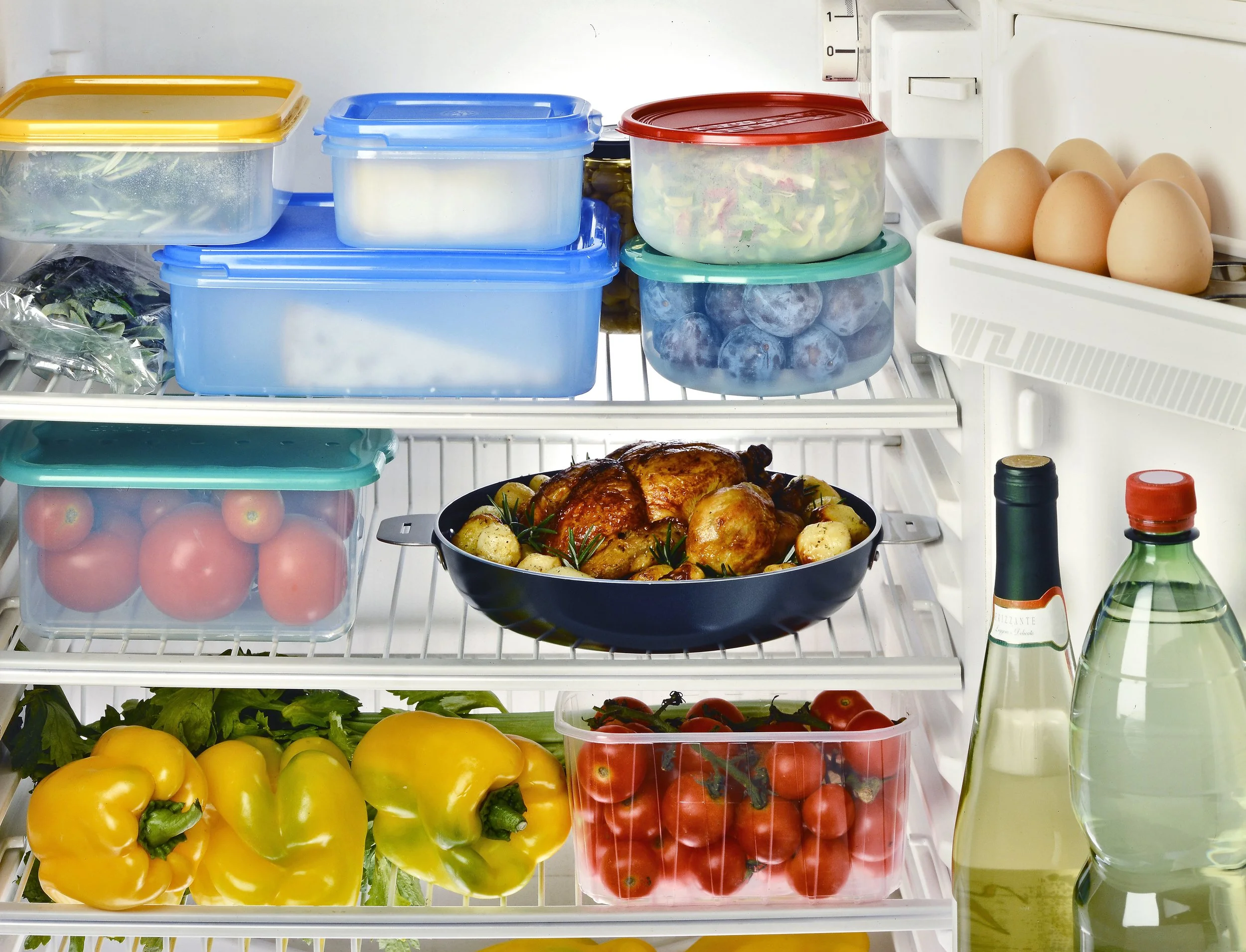A low-carb home is like a lifeboat bobbing alongside the enormous cruise ship that holds our toxic modern food environment. When you hop off the cruise ship and come home to your lifeboat, you can surround yourself with delicious real food, eliminating the highly processed choices onboard the cruise.
Provision your lifeboat with the best food you can afford. Time well spent in the grocery store is the most crucial step for setting yourself up for low-carb success. Shop wisely. And remember, if you don’t buy it, you won’t eat it.
Build your basic grocery list
You know what to buy — meat, fish, seafood, eggs, full-fat dairy, colorful vegetables, tart fruit, and nuts. Plus butter and olive oil, of course! Here is a more detailed grocery list organized by section of the store. Print it and bring it with you when you shop.
Master online grocery shopping
Some of us live in rough food environments. Your local grocery store may not offer the delicious fresh meats, tantalizing vegetables and the healthy low-carb extras you seek. Fortunately, online grocers are expanding. Here are a few who might deliver in your area:
Amazon for next-morning service
Amazon Fresh offers next morning delivery to many locations.
Instacart and lookalikes for speedy deliveries
If you live in a major metropolitan area, Instacart might provide speedy grocery delivery to your home. Their model is grocery delivery in under an hour. Local players like this one offer similar services in many large or mid-sized cities.
Walmart and regional grocers for curbside pick-up
Walmart offers online ordering and curbside pick-up in many markets. Many regional grocery chains are also offering on-line ordering with curbside pick-up. This saves time and is usually free.
Safeway, etc. for home delivery
National supermarket chains like Safeway will accept online orders, pick out your groceries, and deliver to your door for a fee. See what is available in your area.
Thrive Markets for organic-ish non-perishables at a discount
As Fortune put it, “If Costco and Whole Foods had an online baby, it would look something like startup Thrive…” If you want to stock up on low-carb staples like macadamia nuts, jerky, dark chocolate, coconut products, and lard, all delivered to your door at prices that are better than Amazon’s, Thrive is a good option. Note that there is a membership fee of ~$60/year, but you can try it for a month free of charge.
Postmates delivers from grocers and restaurants
Whether you want groceries or a gourmet meal, Postmates is on duty, 24/7, in many markets. They promise speedy, courteous delivery in under an hour.
Consider a meal delivery service
Cook new recipes with fresh ingredients shipped to your door
Like to cook but hate to shop? Like variety? Upscale meal delivery services are newish and en vogue. They package whole food ingredients for meals, along with a recipe, and mail them to you in an insulated box. You do the cooking.
Perhaps you have heard of the mainstream choices – Hello Fresh, Plated, and Blue Apron. You could try one of these and simply throw out the starch and add some healthy fat from your refrigerator or pantry.
Better yet, for a meal service that is closer to low carb, check out the options at these three subscription services:
- Green Chef (scroll down to paleo offerings)
- Sun Basket (click on paleo tab for offerings)
- Chef’d (many options — look for low-carb offerings)
Try completely prepared low-carb meals
For ready to serve low-carb meals that you don’t have to cook, delivered to your door, check out these national options:
Search for local Paleo meal services
Many enterprising chefs scattered about our country offer fresh, ready-to-serve Paleo meals that might satisfy your low-carb needs. Although these services may not deliver, multiple pick-up points can make them convenient enough to justify a weekly stop. Even mid-sized cities in the Rust Belt have local options, like Pittsburgh Fresh!
Atkins offers a line of frozen meals that can be purchased at a discount online as the Frozen Foodie Meal Kit, which includes 14 individually packaged low-carb frozen dinners. You also may be able to find Atkins’ frozen dinners in grocers near you.
Take advantage of farmers’ markets
If you have access to a farmers’ market, it can be a terrific place to shop. Most of what farmers sell is real, unprocessed food, so you will not be dodging aisles of processed snacks while picking out locally grown produce, meat, and dairy.
You might pay a little bit more at these markets, but you are supporting both a healthy local foodshed and the local economy with your food dollar – hard to do at most grocery stores.
Assemble meals without (really) cooking
Everyone has busy days and needs an easy meal. And some of us don’t like to cook and need an easy meal every night.
Diet Doctor's guide, “How To Stay Low Carb When You Don’t Want To Cook” can be a great resource for simple, low maintenance meals from items on your grocery list.
Understand organic and other labels
Should you buy organic? It depends. Is it available? Can you afford it? Focus on the food first and the pedigree of the food second. Organic is a nice extra, but it is not required for healthy eating.
For more on prioritizing the potential upgrades such as grass-fed/free range/wild-caught, this page addresses them all and suggests what matters most.
2. Living Low Carb in a High-Carb Home























